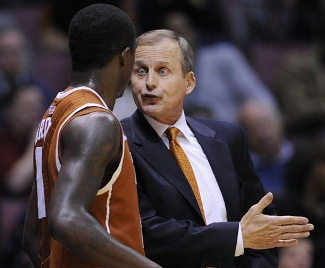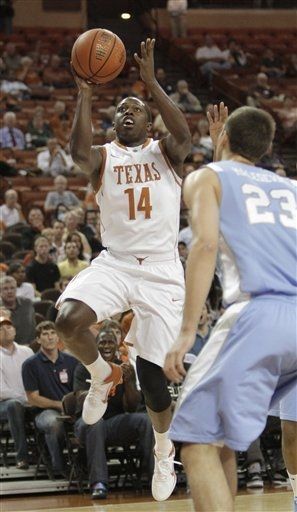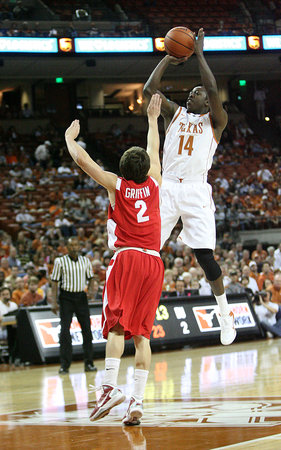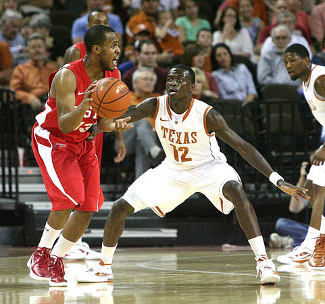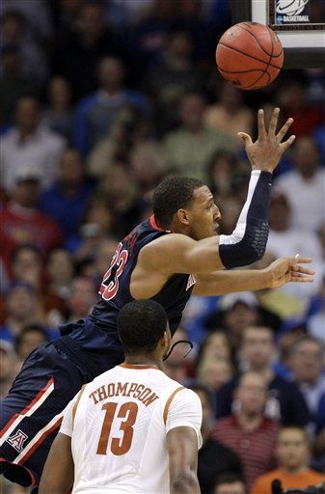Oregon State Beavers 100, Texas Longhorns 95 (OT)
The Longhorns had a fresh-faced 23-year old on the bench Saturday night. He sat with graduate assistants Connor Atchley, Royal Ivey, and Chris Mihm. He listened in from the back of team huddles. He even pulled freshman point guard Myck Kabongo aside for a few quick pointers. About the only thing Kevin Durant didn’t do at the IZOD Center last night was check into the ballgame. Coach Rick Barnes probably wishes that the NBA superstar could have.
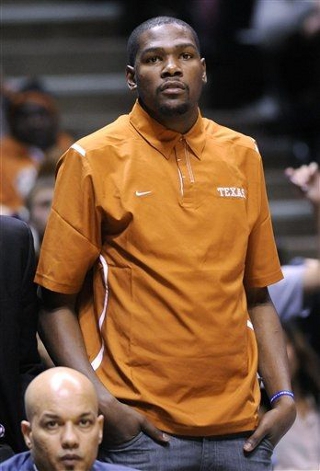
Kevin Durant watched the Longhorns give up a late lead
(Photo credit: Bill Kostroun/Associated Press) 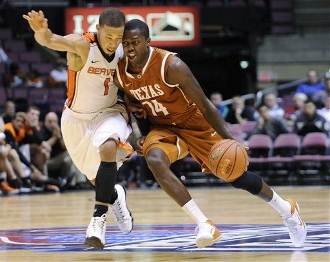
J’Covan Brown led Texas with 25 points
(Photo credit: Bill Kostroun/Associated Press) 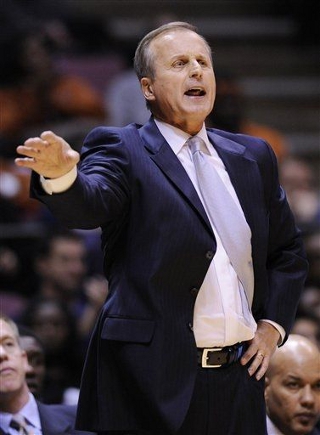
Rick Barnes will have a lot to go over in practice
(Photo credit: Bill Kostroun/Associated Press) |








